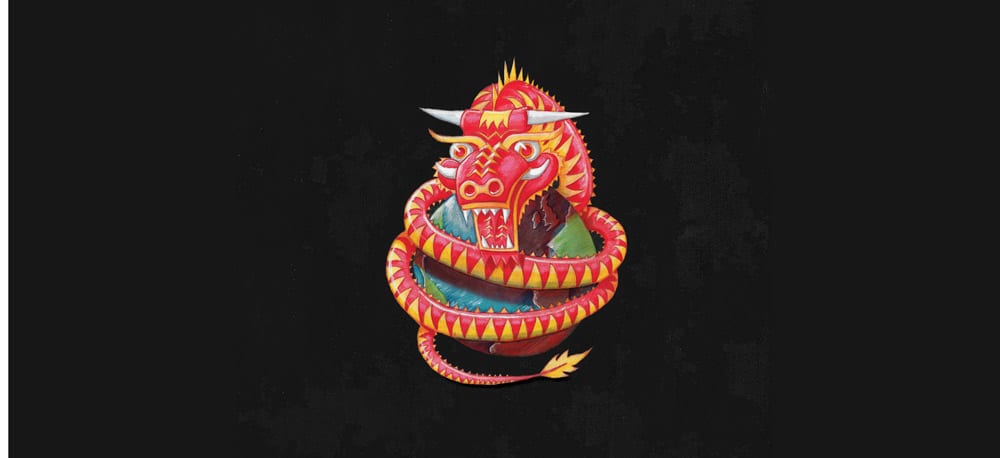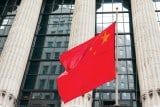China risks large-scale unrest, writes Mark Godfrey, as he warns of the effects of unfulfilled promises of reform.
There was the customary blend of bravado and promises at March’s National People’s Congress gathering in Beijing. But there are fundamental contradictions at the heart of the pledges made by the country’s chief economic policy officer and premier, Li Keqiang.
Two years ago, China committed itself to major reforms at a policy gathering titled the 18th Communist Party Plenum. There would be markets setting prices and dictating economy and industry. The market, not government officials, would set prices for utilities, but since then many of the pledges remain unfulfilled and reform has ground to a halt as Li’s office has become more immediately concerned with slowing economic growth and attendant crises in China’s currency and stock markets. And now Li has pledged to tackle massive industrial overcapacity and the mass lay-offs and factory that are required to resolve this problem.
CYCLE OF DEBT
Overcapacity, fuelled by years of accommodative lending from state banks, is at the heart of China’s current problems as local champion industries have huge volumes of excess coal, steel, chemicals and manufactured items for which there’s no market. Worse, this means that many of these firms are unable to repay their bank loans or pay wages, generating a vicious cycle of debt and economic deceleration.
For instance, the province of Hebei, bordering Beijing, will close 60% of its steel mills by 2020, meaning one million workers will be laid off while the provincial budget will be squeezed by RMB180bn. There are good reasons for closures: China has a glut of steel and there are environmental imperatives such as reducing Beijing’s air pollution. But is the government going to lay off millions of workers at a time of acute income inequality?
China risks unrest by doing so. To shut down the traditional industries China will need massive social support for the unemployed. Putting that cover in place remains a work in progress and varies drastically according to region. In the current economic slow-down it appears that in most cases migrant workers simply float back to their rural homesteads.
TRACK RECORD
China’s poor record on vocational training means there are not a lot of options. Human capital is wasted, with little input into productivity or retraining of laid off manual labourers. China needs to increase social welfare and incentivise workers to set up their own businesses. But with less money coming in, government is unlikely to be able to offer this support. China ought to have closed these antiquated, over-capacity industries when its economic growth and outlook were stronger, but for various reasons China didn’t.
China ought to have closed these antiquated, over-capacity industries when its economic growth and outlook were stronger
Now, in a less favourable fiscal environment, China is being forced to dismantle old industries and support its SMEs. But the result of over-investment and over-capacity in (mostly) state-run heavy industries is that China has RMB300bn in non-performing corporate loans (and an even greater pool of soured loans taken out by local governments) by the end of 2015. Hence, banks have squeezed lending and private firms – particularly those in sectors marked as being overcapacity blackspots – and many can’t get credit even for innovative business plans.
POLICY CHANGES
Chinese local government economic policy has always centred not on SMEs, but on building so-called dragon heads or regional champions. These benefit from implicit government guarantees and credit; thus they’re not forced to play by normal corporate rules or profit imperatives. Frequently state-owned, these dragon heads serve as sponges for employment but also subsidise local consumers by importing, purchasing or selling commodities below market rates.
China has been here before, but crucially this time the rest of the world will feel it more
Small companies in the private sector can’t or don’t pay for research and rely on bodies that are quasi-governmental and not in the business of impartial advice and alerts. Marked by low profitability, Chinese firms too often decline to invest in R&D but rather increase capacity to increase their overall competitiveness: they’re competing on scale rather than on innovation.
CHILDREN OF THE REVOLUTION
Saddled by debt, firms that issue more to roll over debt makes for a wave of zombie firms with no capacity to challenge international competition or to reach for more market share. However, there is a worrying international dimension to all of this.
China has been here before, but crucially this time the rest of the world will feel it more. In the 1990s China was already engaged in huge over-investment and over the subsequent decade government took huge chunks of bad debt off the books of state lenders. But the country wasn’t integrated into the global economy then the way it is today. As a member of the World Trade Organisation, China has access to western markets that it didn’t have then. Hence the anger of steel workers in England and India over the Chinese dumping of low-cost steel, which it has in excess capacity.
Back in China, thousands of angry employees of the state-owned Longmay Mining Group, the biggest coal company in north-eastern China, walked out during the National People’s Congress to protest unpaid salaries, much to the embarrassment of the provincial governor as he sat in the Great Hall of the People in Beijing. Many more labour protests look set to follow and this will test the sophisticated security apparatus China has built at enormous expense to control and monitor its citizenry.







